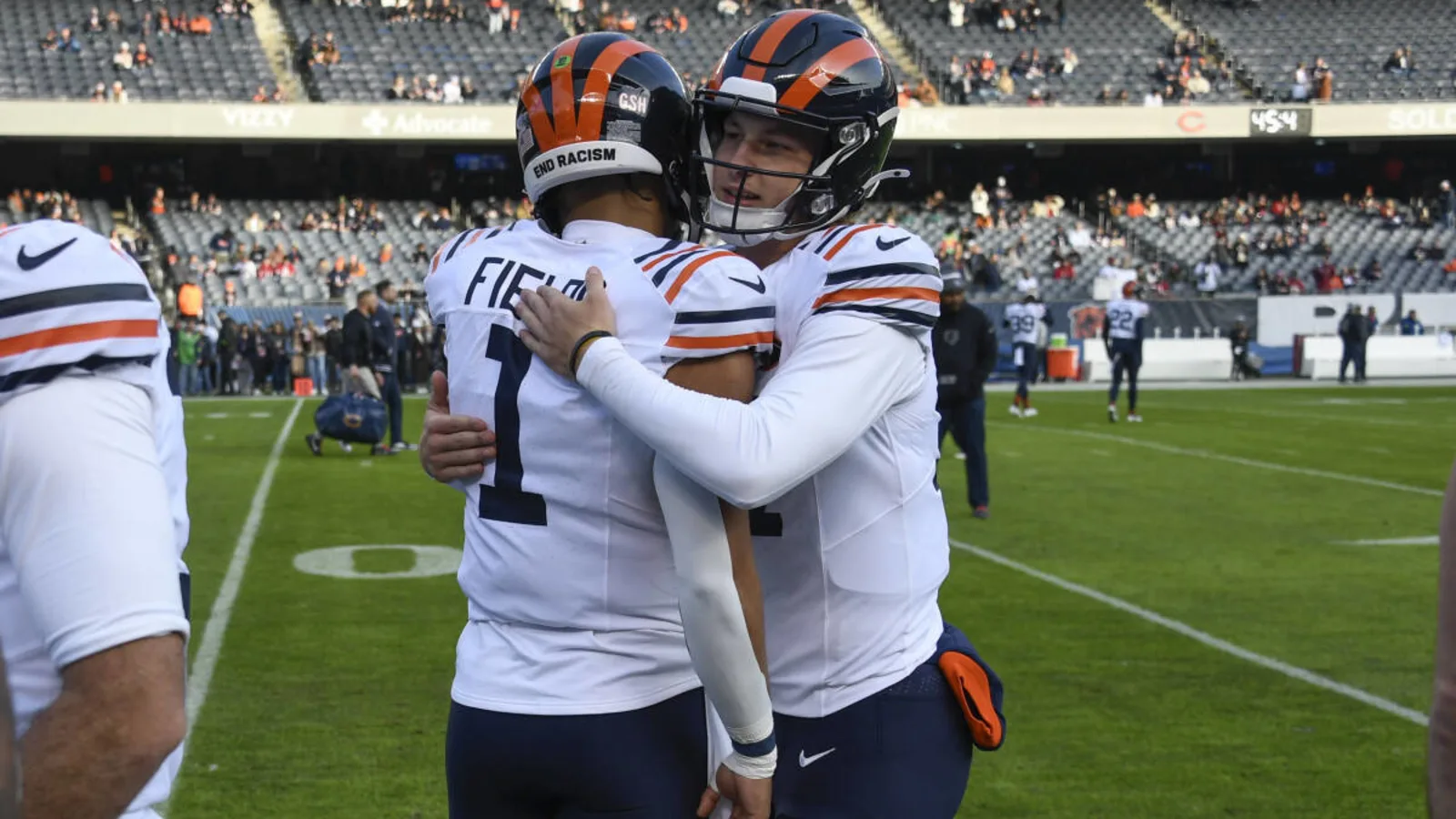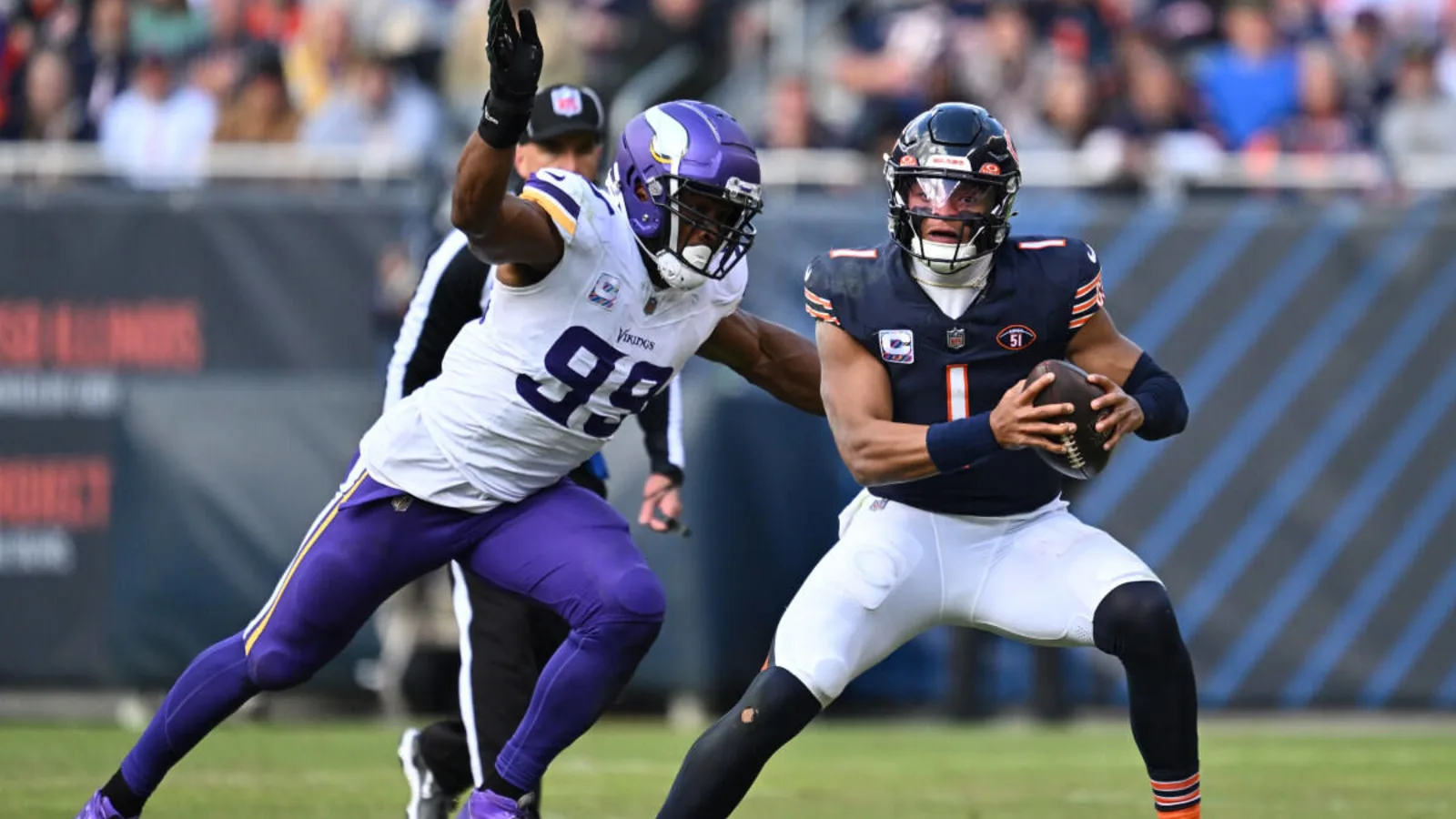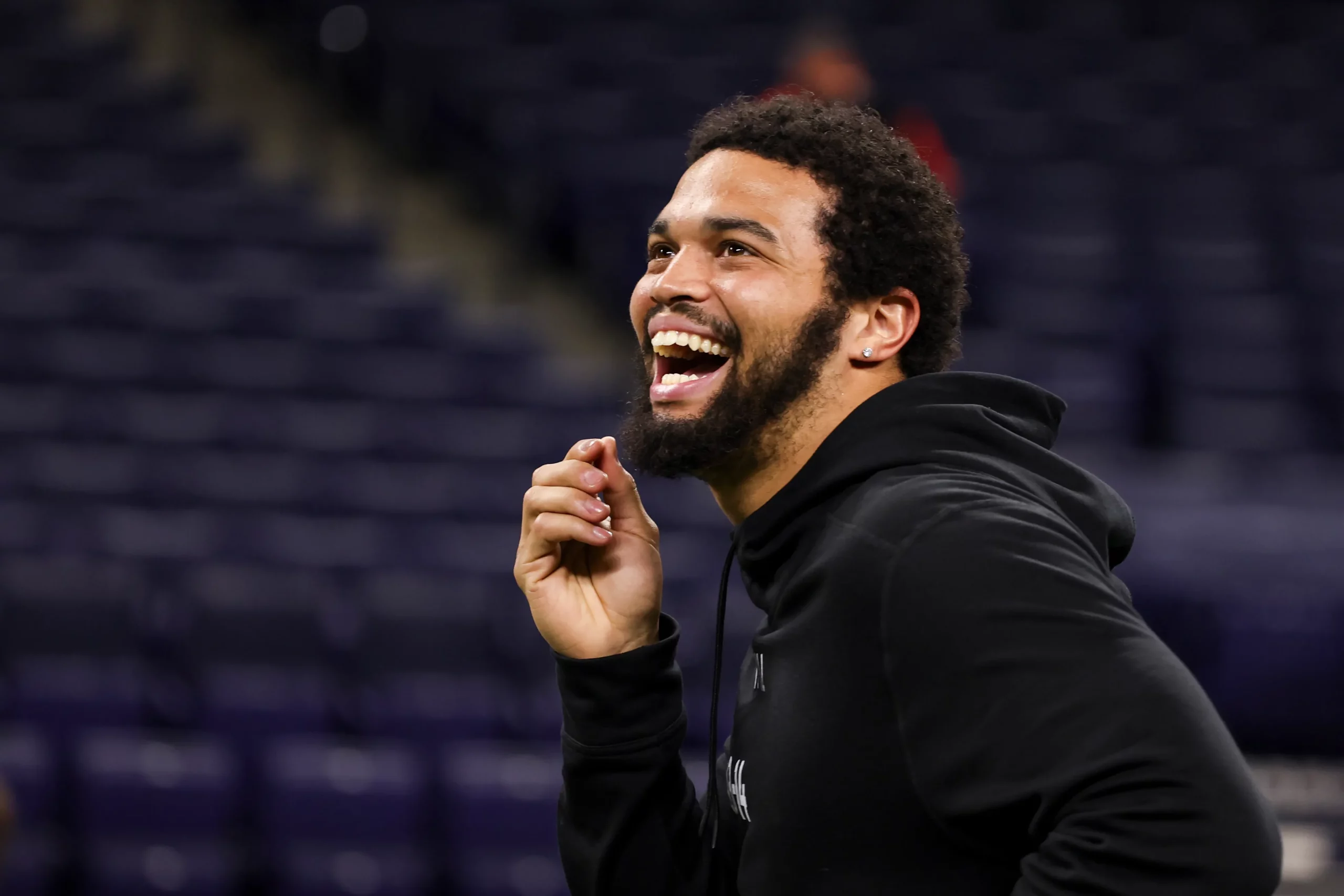
The great angst by Bears fans over the future at quarterback boils down to an age-old human trait: fear of the unknown.Change is generally looked upon with suspicion unless the present situation is totally unbearable, no pun in this case intended.
The thing keeping many from seeing Caleb Williams as a better option than Justin Fields is this great human fear of the unknown. It’s difficult to get anyone past this.
NFL analysts call it a simple case of resetting the salary cap at quarterback but this theory is a sterile concept that makes fans of the sport itself entirely uncomfortable. It has nothing to do with actually throwing the football or running with it.
No one wants to draft the bust regardless of salary cap situations, especially when they have a quarterback they are comfortable supporting. Fields might have a .263 winning percentage as Bears starter, but they’re comfortable with this.
The Bust Factor
In this century, the quarterbacks drafted first overall have generally been worthwhile, if not entirely successful. Busts are uncommon, if this is what worries Bears fans conditioned by the Justin Fields/Rex Grossman experience.
And neither of those two QBs could be called complete busts. Grossman did enough to avoid preventing a great defense from getting to a Super Bowl. Trubisky was a quarterback for two Bears playoff teams and how many QBs since Grossman could say this? (Answer: Zero) They were disappointments, not total busts. Besides, they weren’t drafted first overall.
Here are the first picks overall at the QB position since 2000:
- Bryce Young
- Trevor Lawrence
- Joe Burrow
- Kyler Murray
- Baker Mayfield
- Jared Goff
- Jameis Winston
- Andrew Luck
- Cam Newton
- Sam Bradford
- Matthew Stafford
- Ja’Marcus Russell
- Alex Smith
Russell, Bradford and Winston eventually provided incapable of elevating their team, although both Winston and Bradford had some positive traits. Russell was a total washout. In each of the other cases, it would be inaccurate to say their teams weren’t helped by their play.
From this sample size, there’s about a 23% chance of a bust. So it’s a good chance Caleb Williams won’t be a total bust based on modern NFL scouting techniques.
Take this back even longer and the percentage of quarterback busts with the first pick is about the same. Stats can’t be compared because the game was played differently back into the 1980s, but since the common NFL-AFL draft, these are the other quarterbacks taken first:
- Terry Bradshaw
- Jim Plunkett
- Steve Bartkowski
- John Elway
- Vinny Testaverde
- Troy Aikman
- Jeff George
- Drew Bledsoe
- Peyton Manning
- Tim Couch
Only Couch didn’t evelvate his team in any way. Plunkett wasn’t a spectacular passer but was a gutsy guy and Super Bowl winner. Bledsoe wasn’t Tom Brady, but was pretty good. Bartkowski was a two-time Pro Bowl QB and started 11 years for the same team. Testaverde wasn’t what you’d hope for with the first pick as he once threw 35 interceptions, but he played 21 years and made the Pro Bowl twice. George never attained Pro Bowl status but went over 4,000 yards passing at a time when this was entirely uncommon. And he led the league in passing yards.
Even a 20% chance of bust is going to worry some Fields backers.
The extra picks earned by trading down from No. 1 is an argument many cling to, and they might become great players. This is true. There’s no guaranteeing this either way. The other part of that is the extra time it would take those players drafted to develop in the future. But this can apply to drafting Williams, too.
Even those entirely convinced Williams presents a significant upgrade over Fields could not call the possibility of Fields starting next year an unbearable situation.
However, a quarterback with 38 starts should be playing at a more consistently high level.
Better in Small Increments
Fields’ supporters suggest better coaching and play by teammates would have allowed for consistency before now. It’s not easy to prove this.
And if Luke Getsy was so incompetent as the Bears offensive coordinator why did New England and Las Vegas rush to interview him? Perhaps it was because they’re considering trading for Fields and need info, or perhaps it’s because the think Fields was the problem and not his coaching.
Matt Nagy was running the Bears offense when Fields first became QB and he’s offensive coordinator for a team one win from the Super Bowl. Nagy also was involved in Patrick Mahomes’ development before coaching the Bears. So how bad has Fields’ training been?
Fields did come to the Bears at a time when they were about to begin a free fall as a franchise due to the defense’s age, and one player—even a quarterback of great ability—cannot pull a team out of such tailspins.
At season’s end, evidence existed Fields reached a level of required consistency at a time when the Bears defense finally looked capable of supporting him. Fields really threw only one interception in his final seven starts. Two of his three picks were Hail Mary passes, one of those obviously picked up off the ground to everyone except the guys paid to see it, the NFL referees.
Yet, the Bears had only a 4-3 record in Fields’ final seven starts, with two defeats best categorized as totally blown victories. He cut back on mistakes by taking fewer risks and also produced fewer big pass plays then as his yards per pass dipped to 6.9. He never threw more than one TD pass in a game after returning from the thumb injury.
The sample size of seven games is small, and some of the teams the Bears beat in that group hardly qualified as average opponents for any given NFL Sunday.
Fields beat three teams with losing records—Atlanta, Arizona and Minnesota. He beat the Lions in an entirely impressive win. Two come-from-ahead losses occurred against the Lions and Browns, both playoff teams. The one convincing defeat came at Green Bay against another playoff team.
So the Bears went 1-3 in Fields’ starts against playoff teams with their improved defense and 0-5 in road starts against playoff teams on the entire season when he started.
The Tyson Bagent Formula
There is no way to really project any of this toward the future with exact certainty beyond the bust factor percentage, but there is a way to look back at the past and see more clearly what has happened.
The best way might be to entirely remove Fields from the equation and use a placebo named Tyson Bagent.
Fields missed four starts with a dislocated thumb and in his place the Bears used a Division II quarterback who had never been drafted or even played in an NFL game, Bagent. They managed to go .500 in those four games and did this with edge rusher Montez Sweat still playing for Washington in two of the games.
With Bagent, the Bears beat the Raiders and Panthers at home, two losing teams. The Bears lost on the road with him at quarterback against the Saints and Chargers, two better teams who failed to make the playoffs.
Essentially, their winning percentage was only slightly better with Fields at quarterback for seven games to close the season and with a stronger defense than when Bagent played backed up by a weaker defense.
So what could they be with that better defense but with Williams at quarterback?
With his arm brilliance as college football’s best prospect, Williams’ starting point would obviously be far ahead of what Bagent’s was as a rookie Division II undrafted passer.
If he’s going to enter at a starting point far ahead of Bagent, and Bagent wasn’t getting a lot less done in terms of wins than Fields, why wouldn’t the Bears opt for the rookie QB who has his full career ahead and hasn’t posted a .263 career winning percentage for 38 starts?
Fields has taken steps, of this there is no doubt. They have just been too small to ignore the hot-shot rookie passer rapidly approaching in the rear-view mirror.



Be the first to comment